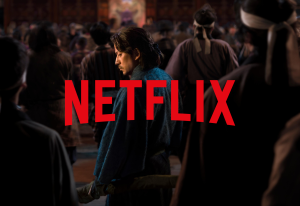Since its debut in 2019, The Mandalorian has redefined Star Wars live-action stories. Beyond the obvious, being the first live-action Star Wars television series, it peeled the franchise’s focus away from Jedi and the galactic politics and instead turned it towards those living on society’s fringes sometimes unduly affected by those galactic struggles. The series occurs after the events of Return of the Jedi, after the Galactic Empire’s fall, but before the New Republic has solidified its power base, especially in places like the Outer Rim. Focusing on a bounty hunter allows for more grounded, gritty, and morally complicated storytelling. And it stars a Mandalorian, built in the mold of Boba Fett, who recently showed up on the show. And as it turns out, much like how The Rise of Skywalker mimics the broad strokes of the Dark Empire trilogy, The Mandalorian was preceded by similar Star Wars comics. Those comics are a trilogy of Boba Fett tales by John Wagner and Cam Kennedy.
Videos by ComicBook.com
Both of those names should be familiar to longtime comic book fans. Wagner looms large over the British comics industry as the co-creator of the iconic character Judge Dredd. Cam Kennedy, in addition to working on Judge Dredd, provided the artwork for two of the most important Star Wars comics ever, Dark Empire and Dark Empire II. That latter story confirmed that Boba Fett somehow survived the Sarlacc pit and continued to work as a bounty hunter after Return of the Jedi.
Hot off the success of Dark Empire, Kennedy teamed with Wagner in 1995 for Boba Fett: Bounty on Bar-Kooda, a one-shot that Boba Fett’s first solo comic. Like The Mandalorian, the stories take place in the Outer Rim after the death of the Emperor. However, the Imperial remnant still controls much territory in the galaxy.

Enter Boba Fett, making a living by being the most feared bounty hunter in the galaxy. The way Wagner writes him isn’t far off from Judge Dredd’s classic depiction or the portrayal of Din Djarin in The Mandalorian. He’s a man of few words, taciturn, and though he isn’t a deputized lawman, he is bringing in criminals, and no matter how dire the odds, somehow gets the job done. He’s an old school Western hero. Together, Wagner and Kennedy finally justified Boba Fett’s badass reputation and loyal fanbase.
Bounty on Bar-Kooda sees a Gorga the Hutt contacting Boba Fett with a job. Gorga recently fell in love with a Hutt named Anachro. The problem is that Anachro’s father, Orko, hates Gorga. In an attempt to sway Orko, Gorga hires Boba Fett to kill Bar-Kooda, a pirate that’s been raiding Orko’s ships.
Bounty on Bar-Kooda turned out to be the first in a trilogy of Boba Fett one-shots by Wagner and Kennedy. The sequel, When the Fat Lady Swings, sees Gorga contacting Fett again, this time to rescue Anarcho after she’s captured and held for ransom on the newlyweds’ honeymoon. At the same time, Bar-Kooda’s even more vicious brother, Ry-Kooda, comes looking for revenge. It blends a Mad Max-style desert chase with a comedy of errors style humor while maintaining Boba Fett’s cool factor. Murder Most Foul concludes the series trilogy with Gorga finally outright hiring Fett to kill Orka only to learn Anachro is pregnant and in a delicate state. The first two stories begin with Boba Fett on an unrelated job. In essence, it feels like five Boba Fett shorts tied together, with beautiful art and action.
If you want to read some Star Wars comics that could be The Mandalorian‘s prototypes, track down these stories. They’re available on Marvel Unlimited and were collected in the Star War: Boba Fett — Death, Lies, and Treachery trade paperback, which is now out of print but can be purchased digitally via Comixology and Amazon. Marvel will reprint them in an upcoming volume of its Star Wars: The New Republic Epic Collection series.








